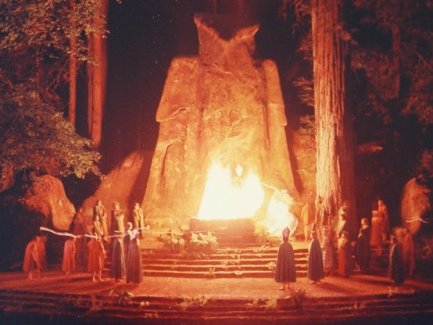Last week I suggested that the basic building blocks of worship worship established in the creation/fall events: (1) God reveals himself and initiates a relationship with his people; (2) God forms the boundaries of the relationship with his commandments; (3) the nature of worship consists in this relationship of communion between man and his Creator; (4) this worship takes place in the sanctuary of God’s presence; (5) failure to obey the commandments of God prohibits communion with him; (6) God provides atonement whereby man is once again enabled to walk in communion with him.
Before showing how these building blocks continue to be developed by God’s people, I’d like to make a tangential point I think worth considering.
The presence of these essential elements of worship in creation account not only for their persistence in the Judeo-Christian worship practice, but also in the practices of pagan worship as well.
 Many have noted that the worship practices of Israel share elements in common with nations around them including a sacrificial system, a sanctuary, priests, etc., leading secular scholars to conclude that the worship practices of ancient Israel arose as mere evolutionary developments from other Near Eastern religions.1
Many have noted that the worship practices of Israel share elements in common with nations around them including a sacrificial system, a sanctuary, priests, etc., leading secular scholars to conclude that the worship practices of ancient Israel arose as mere evolutionary developments from other Near Eastern religions.1
Even some evangelicals, however, suggest that these similarities reveal that when God instituted worship forms for Israel, he “contextualized” worship in cultural forms and practices they would understand. For example, Andrew Hill argues that the institution of sacrifices “demonstrates God’s wiliness to accommodate his revelation to cultural conventions. Human sacrifice was practiced in ancient Mesopotamia, and Abraham was no doubt familiar with the ritual since he came from Ur of the Chaldees (Gen 11:31).”2
However, recognizing that these elements were instituted by God at Creation provides an alternative explanation for the similarities: ideas of sanctuary, atonement, priests, etc. were in the consciousness and traditions of all descendants of Adam. Furthermore, the differences between the worship of Israel and other nations far outweigh their similarities. For a classic argument along these lines, see George Ernest Wright, The Old Testament Against Its Environment (London: SCM Press, 1962). For a more recent treatment, including a survey of changes in scholarship, see John N. Oswalt, The Bible Among the Myths: Unique Revelation or Just Ancient Literature? (Grand Rapids: Zondervan, 2009).
Next time, we’ll see how these elements were developed legitimately by God’s people.
About Scott Aniol
Scott Aniol is the founder and Executive Director of Religious Affections Ministries. He is director of doctoral worship studies at Southwestern Baptist Theological Seminary, where he teaches courses in ministry, worship, hymnology, aesthetics, culture, and philosophy. He is the author of Worship in Song: A Biblical Approach to Music and Worship, Sound Worship: A Guide to Making Musical Choices in a Noisy World, and By the Waters of Babylon: Worship in a Post-Christian Culture, and speaks around the country in churches and conferences. He is an elder in his church in Fort Worth, TX where he resides with his wife and four children. Views posted here are his own and not necessarily those of his employer.
- See, for example, Mark S. Smith, The Origins of Biblical Monotheism: Israel’s Polytheistic Background and the Ugaritic Texts: Israel’s Polytheistic Background and the Ugaritic Texts (New York: Oxford University Press, 2003). [↩]
- Andrew Hill, Enter His Courts with Praise: Old Testament Worship for the New Testament Church (Grand Rapids: Baker, 1996), 33. [↩]
